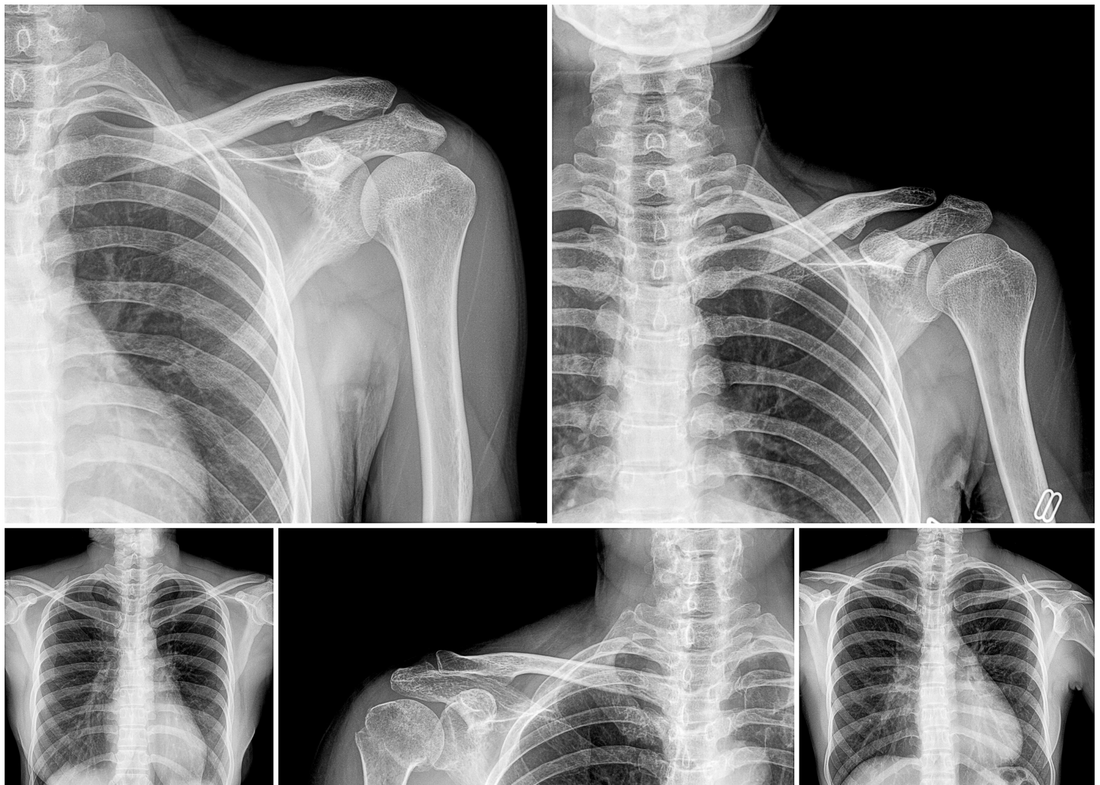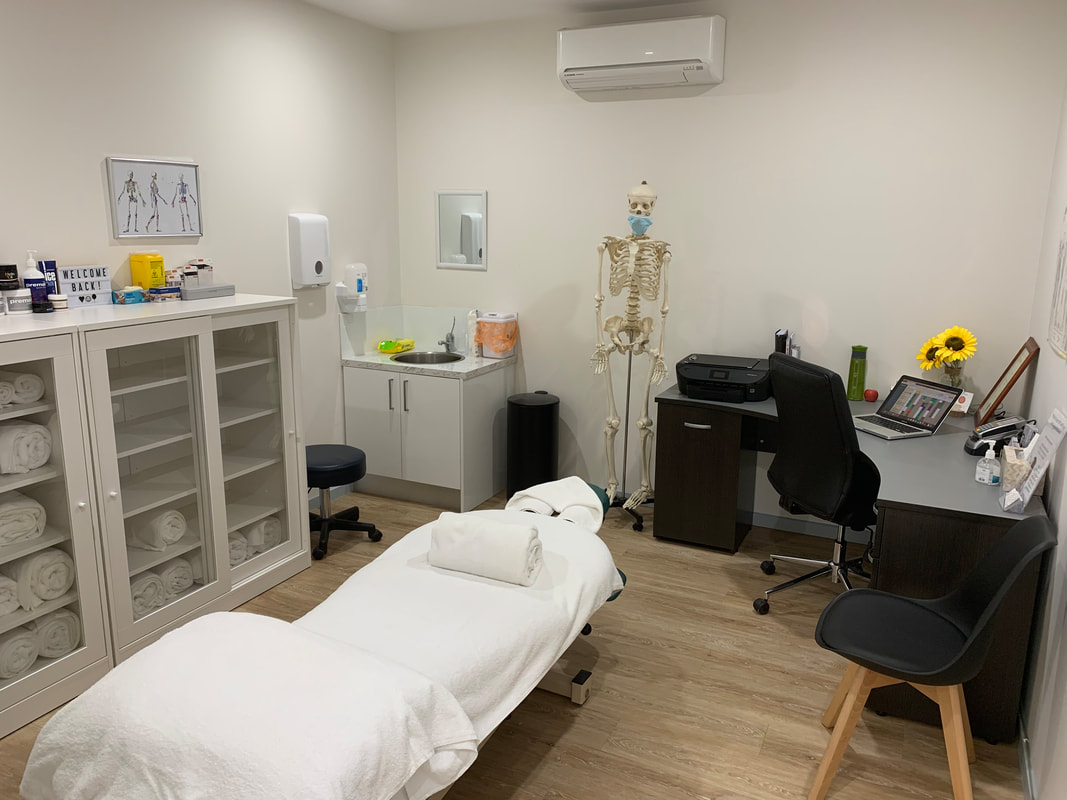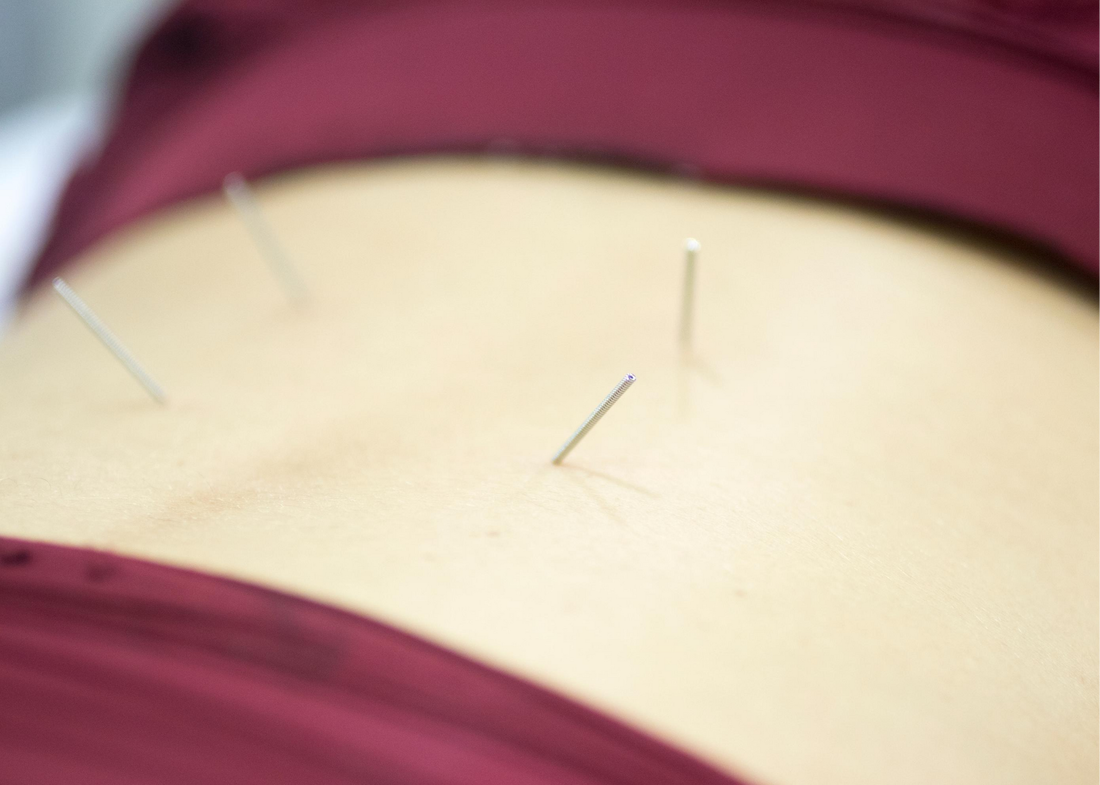|
Predicting how long your body will take to recover from injury or pain can be difficult, because each individual person will have many different factors that can influence their pain.
Your recovery time will depend if your pain is from an acute or chronic issue. We use the terms "acute" and "chronic" to describe your injury or pain type - acute being a new, fresh injury, usually where tissue damage has occurred; and chronic being a longer term condition or pain that continues well after expected tissue healing should have occurred. Acute injuries can include things like ankle sprains, hamstring tears, shoulder dislocations. Usually they happen quickly and are immediately obvious that something is wrong. Maybe you've lifted something too heavy in your gym routine and felt a twinge of pain in your back as a muscle has strained, or you've missed the last step and felt a sharp shock of pain in your hip or knee. High impact blows can also cause acute injuries, like if you have a fall, get in a car accident, or get kicked from a horse. Chronic pain can stem from an originally acute injury. Its common for people to have ongoing pain or sensitivity after an injury that causes a lot of damage. Chronic pain can also be part of many health conditions, like hypermobility and Ehlers Danlos Syndrome, Fibromyalgia, Multiple Sclerosis, and other conditions that affect your nervous system or connective tissue. Chronic pain also describes pain that comes from repetitive patterns of movement or positioning, usually starting as a mild irritation that can build up to be very painful, like De Quervains or "Mummy Thumb" which a lot of new parents experience as intense wrist and thumb pain from holding and feeding their new baby. As a very generalised observation, acute injuries tend to follow fairly predictable recovery pattern as long as normal tissue healing occurs. In fact, the pain of an acute injury can often go away even before the tissue healing has completed, like in the case of a mild ankle sprain where you may be able to weight bear and return to normal movement within a week, even if the tissue around the ankle is still in repair mode. The severity of the acute injury will usually give us an indication of your expected healing time - a mild injury takes a shorter time to recover than a severe injury, this follows our common sense understanding even without medical training. But what about chronic injuries or pain? How can we estimate how long an old injury will take to feel better? And importantly, can we realistically expect long term pain like a very old injury or pain from a lifelong disorder or disease to fully recover? This is where pain starts to become complicated, because in chronic pain patients there are lots of factors involved in the pain outside of damaged muscles, joints or nerves. Chronic pain in one area of your body can lead to pain developing in other areas when your body tries to find different ways of getting things done. If gripping a heavy object becomes painful in your wrists, you may find yourself balancing it on your forearms and tilting backwards from your pelvis instead. As a short term work around this might be ok, but over time you might find yourself with chronic wrist pain AND chronic lower back and hip pain. Unfortunately, if you have a few "layers" of pain areas, this can mean that its likely to take longer to unravel some of the patterns that have lead your body to being in pain. Chronic pain tends to be unpredictable in how long it may take to resolve. For people with pain stemming from lifelong conditions like genetic disorders, autoimmune disease or neurological disorders, the pain is likely to come and go in flares, and our aim for these people is to reduce the severity and frequency of the flares that are a part of their condition. What other factors can contribute to how quickly you recover? Adaptations to movements and positions: Firstly, we need to identify movements or positions you currently do that either exaggerate or relieve your pain. Some of these will be easier to adapt than others - if you notice sitting longer than an hour increases your pain, an easy adaptation may be to get up every 30-60 minutes for a brief stretch. If you spend the majority of your day sitting at your computer, we can look at starting and ending your day with a back extension exercise to decompress your lower back. If we find some movements that relieve your pain, we can look at ways of increasing your time spent doing those movements. We know that we won't be able to change all of the repetitive movements and actions that are needed in your daily life at work and at home, so realistically understanding that some of those things are contributors to your pain means we need to focus on the things we can influence so we can reduce the impact of the things we can't change. There are lots and lots of options for changing some of the movement and position habits your body has built up, and our therapists can help with some suggestions during your appointment. Exercise: Finding a suitable type of exercise for your pain can be very helpful in building strength around the area and in stimulating your body to release its own brand of feel good hormones and neurotransmitters that reduce pain sensations. Exercise might sound very overwhelming to start off, especially if you have a lot of interconnected areas of pain, so our therapists will start you at an appropriate level for where you are at. That might be some mild stretches, a gentle walk or swim, or even a visualisation of doing certain movements. Diet/Nutrition: What you eat influences how your body repairs and recovers. If you have food sensitivities or intolerances this can also effect your bodies inflammatory response - the more inflammation, the more sensitive our nervous system is to pain. If you were already eating a good diet prior to your injury, you are likely in a better position to recover quicker than someone who was eating nutrient-poor food or a diet that caused inflammation. A nutritionist may also be able to recommend supplements that can support your bodies natural healing processes. Fitness & General Health: You may be more likely to have an easier recovery from injury if you were in fairly good health and physical condition before your injury. Your recovery may be slower if you have pre-existing health concerns, including things like diabetes or autoimmune disease. Its never too late to start working towards a healthier lifestyle! Sleep: Good sleep is crucial to good healing. Pain can make sleep very difficult, and this can become a bad cycle of intense pain leading to poor sleep, resulting in feeling fatigued, which causes pain to increase, and so on. Breaking this cycle and getting some proper rest can help with recovery. Using extra pillows to support your body may allow you a longer and deeper sleep. There are also lots of great sleep apps or meditations that some people find useful in falling asleep or getting back to sleep if you wake up in the night. Speak with a nutritionist or pharmacist about night time supplements that can help aid with sleep. Nervous System Health: Chronic pain is often just as much about your nervous system as it is about your musculoskeletal system. This means if you are highly anxious, stressed, depressed, or just have a lot on your plate right now, that your pain levels may be higher than normal. The nervous system controls your entire body, so while we're not saying "your pain is in your head, you're making it up!" what we are saying is that if your nervous system is working overtime then its much more likely that your pain will be noticeable even in response to small actions. Think of it like a kettle that has just boiled, it takes much less time to reboil the kettle because its already hot. The nervous system is similar, it will take much less action for your nervous system to turn up the volume on your pain because its already on high alert. Finding ways of supporting your nervous system is crucial for long term chronic pain conditions. This is also why medications for anxiety and depression are often prescribed for people with ongoing pain. There are lots of natural or herbal supplement options available through Naturopaths and health stores. Setting a nervous system health routine for yourself is also a hugely valuable part of managing stress and overwhelm, and this might include things like mindfulness, meditation, relaxation, affirmations, or anything else that helps you to tone down nervous system activity. Self Care Tools: Treatments with your practitioner are great, but having the tools and know-how to apply treatment principles at home goes a long way to helping you take charge of your recovery. We can teach you how to use a range of tools for releasing tight spots in your body so that you have some tricks up your sleeve for between treatments. Treatment: Get the type of treatment that your body responds to. Some people respond best to hands on treatments like massage, cupping and dry needling. Some people go better with active exercise based treatments. Our therapists can advise you of the treatment types that have been reported to work best for your type of pain, but ultimately each individual body can react differently, and we'll work towards finding the best combination of treatment techniques for you. Be aware that trying too many treatment types at once for the same issue can make it very difficult for any of your health practitioners to determine which treatment is effective. This is also why we'll often pick a small number of Myotherapy techniques to use in each treatment, because if we use absolutely everything we know all at once, its very hard to know what worked and what didn't. Go into your first treatment expecting that it might take your body a little while to start making long term changes, especially if your pain has been there for a long time and if repetitive movements and positions seem to be a big part of your pain hanging around. Try your first appointment with us for $97 (normally $115) Book an appointment with us now. Yep! We're open on Saturday April 3rd and Sunday April 4th, so if you find yourself in need of a remedial massage or myotherapy appointment we are here to help!
We will be closed on Good Friday (April 2nd) and Easter Monday (April 5th) for the weekday public holidays, but you can still catch us over the weekend. Appointments are going fast, check our availability and book in soon! We hope you have a happy and safe Easter! We get asked quite a lot if a scan like an X-ray, ultrasound or MRI is needed first before a Myotherapy or Remedial Massage appointment. Generally, the answer is no, you won't need to go for a scan first. Myotherapy and Remedial Massage are very low risk treatments that can help with your pain without needing imaging first. What can scans show you?
X-rays will show you bony changes. This can include obvious bone injuries like breaks and fractures, as well as things like arthritis and bone spurs. Ultrasound can pick up changes in soft tissues like muscles, tendons and bursa. There are limits on how much detail an ultrasound can pick up especially if the tissue is deep inside the body, and it can sometimes be unpleasant because the scanning device needs to be pressed against the affected area to complete the image. MRIs provide a more in depth look at injured tissue. They can be used to observe bone, muscle and nerve changes, as well as identifying other non-musculoskeletal conditions like cancer or abnormal growths. CT scans are a series of images of the affected area to create a cross section view of bone and soft tissue. When might you need a scan before an appointment? There are certainly times that it can be useful to get your GP to refer you for a scan, like:
Do you already have a scan or imaging report? Great! Bring along the copy of your report to your appointment. Our practitioners can have a read of the findings and make sure that you understand what it means, and this can help inform our treatment approach to your pain. Lets get started! Book your appointment with us and we'll complete an assessment and treatment. If we think you may need some imaging we can write a referral to your GP explaining our assessment and asking them to complete further investigations so that as your health team we get you back to feeling and moving better! Most private health insurers cover Myotherapy as part of the Extras packages. The category that Myotherapy falls under tends to vary between providers, sometimes we are in the same category as Physiotherapy, sometimes under Natural Therapies, sometimes under Remedial Massage.
We often get asked "How much will my private health pay?" but this can be impossible for us as practitioners to guess. The rebate amount varies depending on which health fund you are with and which level of cover you have. There are hundreds of options for Extras insurance. To find out your exact rebate amount, we always suggest contacting your health insurers Members Service team to ask them to check what you're entitled to on the specific level of coverage on your health insurance plan. Some health insurers will give you a set rebate amount that doesn't go up or down if you book a longer or shorter appointment. Some will give a higher rebate on your first ever appointment with a new practitioner, and then a lower amount on all your follow up appointments. And some will give a percentage based rebate, so the amount changes depending on how much the appointment fee is. All health insurers will give you a cap limit per year on the maximum amount of rebates they will give before you use up your limit. This amount varies a lot between funds, so be sure to check with your insurer what your maximum limit includes. Most funds reset the limit at the start of the year on January 1st - however! A small number of funds restart from the financial year on July 1st (including AHM, Defence Health, and PeopleCare just to name a few) and a smaller number reset your limit from the anniversary of the date that you joined them (GU Health, looking at you!) We have had some very kind, concerned patients who have not wanted to use their private health insurance in the past because they believed that it meant we had to give them a discount of the rebate amount. In case you've wondered how this works, let me explain: Using the HICAPS machine in our Knoxfield Myotherapy clinic, we swipe your private health card. The machine connects to your insurer and allows them to pay the rebate amount directly to us, so that all you need to pay is the difference between the total appointment fee and what the rebate covers - this is your "gap" payment. What happens if you don't have your card, if the card has expired, or if the HICAPS machine can't connect for some reason? In these situations, we rely on the good old fashioned method of giving you a receipt to make a manual rebate claim. You pay the full appointment fee, and then your private health insurer pays the rebate amount directly to you. We prefer to use the HICAPS machine whenever we can so that we don't leave you with paperwork to do to get your rebate, but doing a manual claim like this is still a perfectly normal and valid way of using your extras cover! Need an appointment? Book in with one of our friendly practitioners now! We're finally back after a long lockdown period, and we're seeing a lot of people with very similar pain issues in their neck, shoulders and backs. Working from home definitely seems to be taking its toll on peoples bodies, so while we're very happy to help you out by releasing those sore, tight muscles, we also wanted to give a few of our top tips on how you can shake up your daily patterns to reduce your pain. Take Regular Breaks
We can't emphasise this one enough!! The most common thing we're hearing these last few weeks since returning to the clinic is that people are working longer hours. Even if you have the most perfect posture, staying in one position for too long can leave you feeling stiff, sore and fatigued. Think about it this way - if we asked you to hold your coffee cup out in front of you at shoulder height, you could probably do that. If we asked you to hold it there for 6 hours without taking a break, your coffee cup would feel like it weighed a ton, your arm would probably start to shake or cramp, and you would end up trying to lock your elbow joint into position to stabilise your arm. Your muscles would be tired and sore. You might even have trouble allowing your arm to lower because you had been stuck in that position for so long, or find that trying to raise your arm again afterwards felt like you'd been to the gym for 10 hours. Try to take a quick movement break at least once per hour. This could be as little as just standing up, stretching your arms above your head, rolling your shoulders or doing a little spinal twist. You could use this chance to drink some water, go to the toilet, make a cup of tea, or stand in the sun. Trust us, your body will thank you for the movement and the chance to reposition. Set Up Your Workstation You're probably not the only one working from your home right now. We know a lot of people have to share their work from home space with partners and kids, and theres only so much space to go around. As best you can, try to set up your workspace so that your equipment is at the right height. This means screens at eye level, mouse and keyboard positioned so your arms can be at 90 degrees, and your chair is at the height that allows you to have your feet resting comfortably. We know this isn't possible for everyone. Some patients we've seen this last week or so have been telling us they have to work from a low coffee table, or at a high kitchen bench, or even working from bed. If this is your situation, please keep in mind that regular breaks are going to be even more important for you! Stretch and Move! There are plenty of easily available online stretching and movement classes that you can use to help guide you through some feel-good motions. Our favourite is Erica Webb's online yoga and pilates studio, which offers a great variety of classes including what Erica calls "movement snacks" which are short 5-10 minute videos that you can do anywhere, any time! Memberships to Erica's studio are less than $10 a week, and include a selection of on-demand classes and live yoga classes. Set Strong Work/Home Boundaries The blurring of the line between work and home has been strong this last year! We're hearing from people that they are often logging in early or continuing to work late to try to get ahead of deadlines or hectic work weeks - and often these extra hours are not even paid hours of overtime! A once in a while overtime session may be occasionally needed, but we encourage you to try to avoid the temptation of working longer hours on a regular basis. Use Your Self Care Tools Massage balls, foam rollers, magnesium creams, heat packs - all of these tools that we talk about in the clinic are really great ways that you can help reduce tightness and tension in your body between treatments with us. If you're not entirely sure how to use them, ask us at your next appointment and we can show you the best way to get into your problem areas using tools you already have, and give you recommendations of new self care tools that are a great investment for your health! (We don't sell any of these products, but we can direct you to reputable stores or websites that you can purchase from) Book a Treatment! Now that you can access manual therapies again, book in with us! We'll help you make some quick improvements to tight aching muscles, and help you plan for reducing pain while you continue to work from home or once you get back to your office! After the nearly 3 month COVID lockdown, we're very happy to say that Myotherapy and Remedial Massage are back from Wednesday 28th October! We've moved a few things around in the clinic, and we can't wait to welcome you back and resume your treatment plan. We've given the first choice of appointments to those of you we know have been waiting patiently for this day, but we'll have our full online booking system up and running again very soon.
Thanks for your support throughout this year! In short: Yes, we will be closing our doors again for a short 6 week period.
The new restrictions coming into place today have big consequences for almost all Melbourne residents, but lets talk the specifics of what this means in relation to your Myotherapy or Remedial Massage treatment plan. We've been advised that Myotherapy and Remedial Massage can't continue. Yes, we do screen every person we see, we clean thoroughly between every single appointment, and therapists and patients are both wearing masks. We've done everything we can to mitigate risks, and follow the ever-changing rules so we can keep you safe. But the DHHS have asked us to help by taking a temporary break. There are significant fines for businesses and individuals who don't adhere to the new restrictions. The fines for a business staying open when they are not permitted is up to $10,000, and the fine for an individual is $1652. Thats a very expensive Myotherapy treatment! Myotherapists and Remedial Massage Therapists are not alone in this restriction though. In fact, it will effect all Allied Health practitioners in some ways. Over the last few days the advice has changed, depending who you ask, but in general it appears that urgent care can still be accessed from Allied Health providers like Physiotherapists, Osteopaths and Chiropractors. The initial advice was that all patients would need a referral in the form of an Enhanced Primary Care (EPC) or Chronic Disease Management Plan, but I have now seen the Chiropractic Association indicating that referrals may not be needed. If you're in doubt over whether you can be seen by someone for urgent care, your GP is always a safe bet. They will be able to clarify which Allied Health practitioners you are able to see, and may also be able to give you additional guidance or prescribe you medication if its needed. Dr Wajib Dib at Together Medical Family Practice is a fantastic bulk billing GP, and is still taking new patients for phone consultations. What does "urgent care" mean? Urgent care may include things like:
Who should you see for urgent care? We know and trust these local Allied Health practitioners:
I'm very sad to be closing my doors again, for the third time this year. One of the hardest parts for you, my local Knox and outer Eastern burbs patients, is that our local government area is actually one of the lowest in all of Melbourne for total and active cases. While other areas have huge rising numbers of cases, our area stays fairly low risk. I'm sorry I can't be here for you for face to face support for these next 6 weeks, but my phone and email are always here to offer advice, send you links to exercises and self care, or to answer questions. As we've all seen over these last few weeks, there are a small number of people doing the wrong things, and unfortunately its come to that time where its now impacting everyone with a blanket restriction across the whole Melbourne Metro area. Thank you for doing the right thing so we all get through this quicker. Thanks for getting tested if you show symptoms. Thanks for staying home til you get those test results. Can't wait to see you again soon! Dry Needling is a manual therapy technique used by Myotherapists to help reduce pain and tension in muscles. We've previously discussed the similarities and differences between Dry Needling and Acupuncture, but you may still be wondering - how does Dry Needling actually work? The "Dry" Needle
The reason they are called "dry" needles is to differentiate them from hollow needles like the ones used for blood tests or vaccinations. A dry needle can't inject or withdraw fluids from your body. The needles themselves are ultra thin and flexible. They come with a guide tube to allow us to place them with care and precision. All needles used for dry needling are single use only. Where We Apply It Myotherapists use dry needling in painful, tight or restricted muscle groups. You may have heard about Trigger Points - those painful, tight bands that can form within a muscle over time, with repeated use or from injury. Dry needling is a technique that helps address these trigger point areas in a very specific and precise way. We assess the areas through watching you move and through palpating the muscles to find the best spots within the muscle to position the needle to relieve the trigger point. We also assess the surrounding joints and muscles, for example for hip pain we may find that dry needling in your lower back or in your thigh can help relieve pain and strain from your hip. What Happens When We Needle A Trigger Point? When we first insert the needle to the muscle, it can be felt as a little pinprick sensation on the skin. We then guide the tip of the needle into the right angle and depth of the muscle to directly stimulate the trigger point. This takes some skill and the ability to visualise in 3D the target muscle and the surrounding tissue like nerves, veins, arteries, bones and ligaments. By applying the needle into that trigger point, it causes a combination of chemical and electrical responses by the muscle. The micro damage causes by inserting the needle sends chemical messengers to the brain to get a healing response to occur. It can also cause a nerve impulse to occur, making the muscle twitch and release. To Stimulate or Not To Stimulate Because our aim in using dry needling is to get a change in the muscle tension, we often can stimulate the needle. This means we might gently move the needle in a pulsing in/out movement to repeatedly stimulate the trigger point, or we might twist the needle in a particular direction or in a series of back and forward movements. Stimulation of the needle can lead to more twitching, what we call Local Twitch Response. Dry needling can be effective even without the involuntary muscle twitch response. Some practitioners prefer a more intensive stimulation of the needles, however we prefer a gentle and slow approach. Does Dry Needling Hurt? In most cases, not really. Which is often surprising! The most common sensations you'll feel are the pinprick of the needle being positioned, a dull aching or tightening sensation around the needle, and the quick twitching response of the muscles releasing. The twitching can sometimes feel intense, but only lasts a very short time. After needling, some people can experience a little localised soreness at the sites of the needles, but most people just feel relief from tension and pain in those areas. Is Dry Needling Safe? In the hands of a trained practitioner, dry needling is a safe and effective technique. Myotherapists undergo many months of training and assessment in the skillful use of dry needling, however not all practitioners who offer dry needling are Myotherapists. Remedial Massage Therapists, Chiropractors, Physiotherapists, and other skilled practitioners can opt to undertake short courses in dry needling. Here in the Simple Wellness Myotherapy clinic, we only allow our Myotherapists to use dry needling on our patients, and we strongly believe that a weekend short course is not enough time to develop the skills needed to use dry needling safely and effectively. What Sort Of Pain Can Dry Needling Help Treat? Dry needling is great for releasing tight trigger point areas all throughout the body. It can be effective in treating headaches, neck and shoulder pain, back pain, bursitis, pain from disc injuries, sports injuries, plantar fasciitis - so many things! Want to try dry needling for your muscle pain? Book an appointment with one of our Myotherapists. We took the last 10 days to take a slow and cautious approach to completing our risk assessment with the rolled back Stage 3 Restrictions here in Victoria.
I've just listened to Dan Andrews' update for Sunday 19/07/20, and after reviewing all the data of the last 10 days since the Stage 3 Restrictions were re-announced, I have some updates on our risk assessment. And its good news! Our local council area, Knox Council, has stayed a relatively low risk zone. Knox has remained one of the least effected regions of Metro Melbourne throughout the pandemic. As of 19/07/20, there are only 9 active cases of COVID19 in the Knox region, and the data shows good statistics on very low new cases occurring in our area, and good rates of recovery. The Department of Health has advised that Myotherapy and Remedial Massage appointments are still allowed under the current Stage 3 Restrictions. This means that you are currently allowed to continue getting treatment for chronic pain conditions, injuries, or pain from your new work from home set up! We can help you with headaches, back pain, sciatica, shoulder pain, fibromyalgia pain, RSI, nerve symptoms like pins & needles and shooting pains, and these sorts of specific pains or injuries. From Monday 20th July, we will be open these hours: Monday, Tuesday & Friday 9am-7pm Wednesday & Thursday 9am-4pm Saturday 9am-6pm Dan Andrews has announced today that from midnight on Wednesday this week, it is mandatory to wear protective face masks outside of your home. This is to protect you, your family and your community. We know this may not feel comfortable during your treatment, but we will ask that you keep your mask on during your appointment. Help us to keep COVID19 out of our clinic:
What about Stage 4 Restrictions? Theres a lot of talk going around about Stage 4 Restrictions, but Dan Andrews has not announced any plans to move to this level of restriction at this time. If any further tightening of restrictions is announced, we will keep you informed with how that impacts your treatment plan. To make a booking, go to our online booking page to see our current availabilities. Our Myotherapists help a lot of people with scoliosis of varying degrees, from very mild curves to more exaggerated curves that permanently alter posture. Myotherapy is not a cure for scoliosis, but ask any of our patients and they'll agree that managing the pain and muscle fatigue is much easier with a regular treatment to help manually decrease the load and pressure on their spine. What is Scoliosis?
Scoliosis is a curvature of the spine to the right or left, creating a C or S shaped spine. It usually begins at puberty during growth spurts. Most people with scoliosis will have mild symptoms that can be managed by staying active and using therapies and tools that manage muscle tension and discomfort. What do Myotherapists do to help someone with scoliosis? As always, we start with an assessment. We'll look at your back, and how you move and check where you feel pain during your movement. You'll probably notice you have regular patterns that your scoliosis follows - like one hip or shoulder sitting higher than the other, one shoulder that rolls forward or backward more, or a particular painful spot that gets really tight or feels like it builds up pressure. Hands on massage treatment is always a favourite with our patients. Why? It feels good! And it helps to stimulate the over-tired muscles supporting the spine. This can help reduce the muscle tension and fatigue, and let those high-pressure areas feel some relief. Cupping is a technique that works particularly well for a lot of our scoliosis patients. We use cupping to help get a quick change in muscle tightness and reduce trigger point areas, while also bringing lots of new, fresh blood to the muscles to help them heal and release. The cups have a pressure valve and a pump that we use to create the gentle suction effect, which stretches the muscles and connective tissue under and around each cup, and stimulates increased bloodflow to that area. They can feel a little pinchy at first especially over tight areas, but after a few minutes that feeling usually goes away, and when the suction is broken the pressure releases and leaves the muscles feeling warm, stretched and more mobile. The relief that comes after a treatment can be extended by using taping to help support your spine, hips and shoulders. Did you know you can keep the tape on for up to a week? How often do I need to see a Myotherapist? When you first come in, we like to see you again within 1-2 weeks to see how your first treatment settles in. From there we can work out the best schedule for you to keep painful flare ups at bay. This is really different person to person, but the average is about every 2-4 weeks - for some people we spend a little longer doing weekly treatments until it starts lasting longer, and for some people we can move to a 6-8 week schedule. If you experience a pain flare up, come in for an appointment so we can settle the flare as quickly as possible and get you back to your normal maintenance routine. How do I get an appointment? Appointments can be made online or you can phone Mel on 0401212934. |
Meet Our Team
We have a team of great practitioners available 7 days a week at our Rowville clinic. Archives
July 2024
Categories
All
|
Got a question about Myotherapy?
Contact Mel by phone, email or Facebook
|
Simple Wellness Myotherapy & Remedial Massage Clinic
Shop 12B 150 Kelletts Rd Rowville VIC 3178 |
Phone us on
03 8204 0970 |






 RSS Feed
RSS Feed